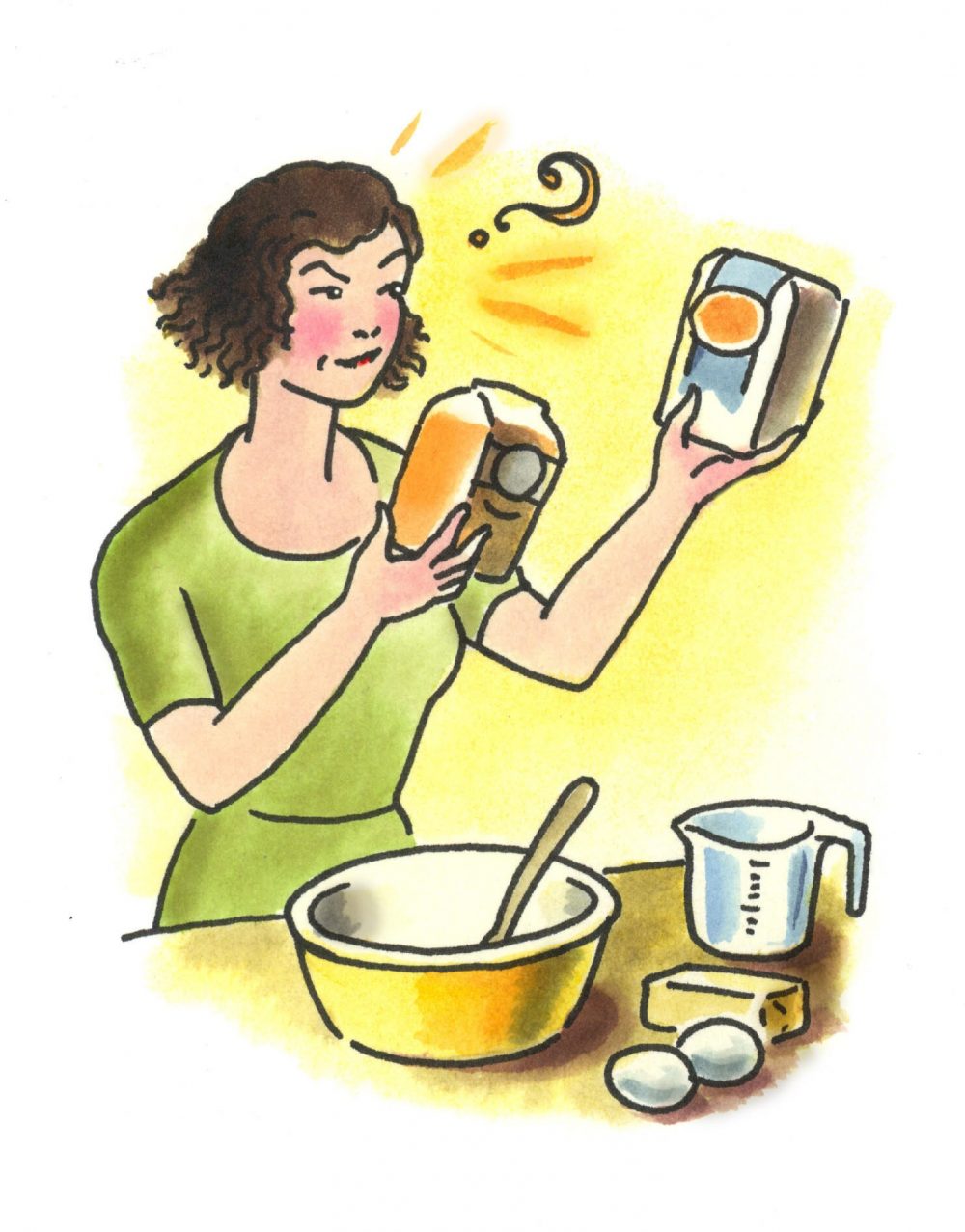
Swapping Flours? Proceed with Care
Substituting one flour for another in baked goods can be tricky; one-for one substitutions rarely work well. Amanda Nieves of Phoenix, Arizona, recently called Milk Street Radio to ask about using bread in place of all-purpose.
We tried using bread flour in several baked good recipes, including yellow cake and sugar cookies, but didn’t have success. The cake had a dense, gummy texture and the cookies lacked crispness. There are important differences between wheat flours related to the proteins that form gluten when combined with water. The more protein a flour has, the chewier the final product. So bread flour—roughly 12 to 14 percent protein—is ideal for crusty loaves and pizza crusts, while pastry flour—7 percent—is better for delicate pastries. All-purpose flours fall in the middle and are the safest bet for most baking. When making substitutions, we prefer to use flours that add flavor, such as rye, buckwheat and almond flours. We add extra dimension and earthiness to classic chocolate chip cookies by using nearly equal parts all-purpose flour and dark rye flour. In our tangerine-almond cake with bay-citrus syrup, we use a high proportion of almond flour to all-purpose flour for deep, nutty flavor and extra-moist texture. When making your own substitutions, we suggest starting by replacing 20 percent of the all-purpose flour with an alternative.
Finding the Tenderest Side of Steak
Nailing a perfectly tender, boldly flavored steak can be a struggle. Shawnee Snyder of Seattle, Washington, asked for help after getting lackluster results with a flank steak marinated overnight in white wine and Dijon mustard, then baked in the oven.
We’ve generally been disappointed by marinades; they rarely do more than coat the exterior of the meat with flavor. We favor seasoning after cooking and cutting, when bold flavors can mingle with the meat’s juices and coat each slice. For example, in our Thai beef salad, we toss thinly sliced, medium-rare steak with a dressing made from fish sauce, brown sugar and chilies. For thin steaks such as flank (1 inch thick or less), we suggest liberally salting the meat—roughly 1 teaspoon kosher salt per pound of meat—then letting it stand at room temperature for one hour. After that, skip the oven and instead give it a quick sear—without moving other than to flip once—in a very hot, lightly oiled cast-iron skillet until well browned on each side. Let the steak rest for at least 10 minutes before slicing to allow the juices to redistribute; otherwise its moisture will rush out, making the steak dry and less flavorful. Slicing the steak against its grain—cutting across, rather than with, its fibers— helps mitigate toughness. Finish with a sauce that boosts the beef’s flavor and is acidic enough to provide contrast. For example, in the tangy, herb-rich Italian salsa verde that we pair with strip steak, anchovies add depth while capers cut through the fat.
For the Best Beans, Go Slow and Soak
At Milk Street, we cook with dried beans as often as possible; their taste and texture trump the convenience of canned. But Jamie Hunte of Tyrone, Georgia, recently called Milk Street Radio to say she has been struggling with them. Sometimes they cook up crunchy, other times mushy, and never as full-flavored as they should be.
This is a two-part problem: how to cook beans and how to infuse them with flavor as they cook. To find a better approach, we cooked nearly 12 pounds of kidney beans. Soaking them overnight was crucial. Beans that weren’t soaked cooked unevenly no matter what cooking technique we used. Soaking them in well-salted water (2 tablespoons Diamond Crystal kosher salt in 8 cups water) was also key, producing the tenderest, fullest-flavored beans. The salt softens the tough skins, allowing the beans to better absorb liquid. For the actual cooking, the direct heat of the stovetop produced irregular results. The more uniform heat of the oven was best. We brought 1 pound of beans to a boil in 6 cups water with 1 1⁄2 teaspoons salt in a Dutch oven on the stovetop, then baked them covered for one hour at 250°F, then uncovered for another two to three hours to concentrate the flavors of the liquid. For better flavor, we took a lesson from Italy, where beans are often cooked with aromatic seasonings. We like using 1 chopped onion, 2 bay leaves and a whole head of garlic with the top sliced off (after cooking, squeeze the cloves into the broth to flavor and thicken it).




